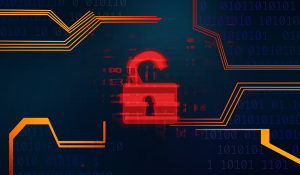The Anatomy Of A Phishing Attack
Among the numerous cyber threats lurking on the horizon, phishing attacks have emerged as a formidable adversary. Like a stealthy predator, these...

In this relentless digital battlefield, businesses and organizations are pitted against a multitude of adversaries ranging from individual hackers seeking notoriety to sophisticated cybercriminal syndicates with financial gain in mind. Understanding the tactics, techniques, and procedures employed by these threat actors is crucial for any entity looking to safeguard its sensitive data, reputation, and bottom line.
This blog post aims to be your guiding light through the labyrinth of cyber threats that businesses and organizations face on a daily basis. We will delve into the world of cyberattacks, shedding light on the most prevalent and disruptive tactics. From the insidious phishing emails that lure unsuspecting employees to the cutting-edge ransomware attacks that hold critical systems hostage, we will explore the anatomy of these threats, decipher their motives, and at the end our experts will provide insights into effective defense strategies.
A cyberattack is a deliberate and malicious attempt to exploit vulnerabilities within computer systems, networks, or digital infrastructure with the intention of gaining unauthorized access, causing damage, stealing information, or disrupting operations. These attacks are executed by cybercriminals, hackers, state-sponsored groups, or even disgruntled insiders who seek to exploit weaknesses in technology for various purposes, often resulting in significant financial, operational, or reputational consequences for their targets.
In tandem with technological progress, the methodologies and approaches utilized by cyberattackers are also evolving, encompassing various types of cyberattacks. This underscores the critical need for individuals, businesses, and organizations to remain vigilant and implement resilient cybersecurity measures, thus fortifying their defenses against these imminent dangers.
There are different types of cyber attacks, some of which may be the following:
|
Malware attacks |
Malware attacks are the use of malicious software, such as viruses, worms, Trojans and ransomware are used to infect the target system. They help to gain control or steal data. |
|
Phishing |
Phishing is a fraudulent method. This uses emails, messages or websites to trick users into revealing confidential information. Examples include: Passwords, credit card information or personal data. |
|
Denial of Service |
Denial of Service (DoS) attacks are attacks that attempt to cripple a network or website. This is done by overloading the network or website with a high amount of traffic. This makes it impossible for normal users to access it. |
|
Man-in-the-middle (MitM) attacks are an attempt to intercept communication between two parties. The attacker tries to steal information or influence the communication. |
|
|
Zero-day exploits |
Zero-day exploits are attacks on unknown vulnerabilities in software or systems. These vulnerabilities do not yet have patches or security updates. |
In the next section, we will introduct you to the most common cyberattack in the last few years.
The effects of cyber attacks can be severe. They range from financial losses and operational disruptions to identity theft, loss of sensitive data or compromised national security. They can involve techniques such as phishing, where deceptive emails or messages are sent to individuals to trick them into revealing sensitive information like passwords or financial details.
Other attacks might involve malware, software specifically designed to infiltrate and compromise systems, or ransomware, which locks users out of their own data until a ransom is paid. Find out more about them!

Malware, short for "malicious software," is a category of software explicitly designed to infiltrate, damage, disrupt, or gain unauthorized access to computer systems, networks, and digital devices. It encompasses a wide range of harmful programs that are created by cybercriminals with the intent to exploit vulnerabilities and compromise the security and functionality of the targeted systems.
It can take the form of viruses, worms, Trojans or ransomware and is usually installed without the user's consent to infect the system. They can steal confidential information. Malware can take control of the system which can lead to damaging the system. This is the reason why operating systems and applications must be updated regularly to protect against malware attacks.
Malware can be distributed through various vectors, including email attachments, infected websites, malicious downloads, and compromised software.
Ransomware is a malicious form of software designed with the sinister intention of encrypting a victim's files or locking them out of their own computer system, rendering their data inaccessible. This cyberattack strategy aims to extort the victim by demanding a ransom payment, usually in cryptocurrency, in exchange for providing the decryption key or restoring access to the compromised files or system.
Ransomware is often spread via infected email attachments, fraudulent downloads or vulnerable remote desktop protocols. Victims of ransomware attacks often experience: - significant financial damage - business interruption - loss of important data. But there is one exception - the data can be restored through backups or other methods.

Adware (short for "advertising-supported software), is a type of software that displays unwanted advertisements or promotional content to users. Unlike malware, adware is not explicitly designed to cause harm or steal information; rather, its primary purpose is to generate revenue for its creators by delivering targeted ads to users' devices.
Adware often comes bundled with legitimate software downloads, and users might unknowingly agree to its installation while installing other programs. Once installed, adware tracks users' online activities, browsing habits, and preferences to display ads that are more likely to attract their attention. These ads can appear as pop-ups, banners, in-text ads, or even redirect users to specific websites.
Trojan virus, alsko known just as Trojan, is a type of malicious software that disguises itself as legitimate or harmless software to deceive users into installing it on their devices. Named after the ancient Greek story of the Trojan Horse, where soldiers hid within a large wooden horse to infiltrate a city, a Trojan virus operates on a similar principle of deception.
Unlike other types of malware that aim to replicate and spread on their own, Trojans do not have the ability to self-replicate. Instead, they rely on users to willingly execute or install them. They often masquerade as legitimate software, attractive downloads, or files that users might want to open, tricking them into initiating the infection process.
Once a Trojan is installed on a system, it can carry out a variety of malicious actions. These actions can include stealing sensitive information, providing unauthorized access to the attacker, modifying or deleting files, or even installing additional malware onto the compromised system.
A Denial of Service (DoS) attack is often a malicious attempt to disrupt the normal functioning of a computer system, network, or online service by overwhelming it with a flood of traffic or requests. The goal of a DoS attack is to render the targeted system unavailable to its intended users, causing downtime, slowdowns, or complete shutdowns.
The attacker often employs various techniques to flood the target with an excessive volume of traffic that exceeds its capacity to handle. This can lead to a depletion of resources such as bandwidth, processing power, memory, or network connections. As a result, legitimate users are unable to access the service or website, causing frustration and potentially financial losses for businesses that rely on online operations.
A Distributed Denial of Service (DDoS) attack is a sophisticated cyber assault that leverages multiple compromised devices, often forming a network of bots called a "botnet," to overwhelm a target system, network, or online service. Unlike traditional Denial of Service (DoS) attacks that use a single source to flood the target, DDoS attacks distribute the attack traffic across many sources, making them significantly more powerful and challenging to mitigate.
In a DDoS attack, each compromised device, known as a "bot," is controlled remotely by the attacker. The attacker orchestrates these bots to simultaneously flood the target with a massive volume of requests, traffic, or data, saturating its resources and causing disruptions. This overload can lead to slowdowns, unresponsiveness, or even complete service outages for legitimate users attempting to access the targeted system.
Both, DoS and DDos are types of silent hacker attack. It refers to a covert and stealthy cybersecurity breach or intrusion that occurs without raising immediate suspicion or triggering noticeable alarms. In such attacks, cybercriminals aim to bypass detection mechanisms and quietly compromise a system, network, or device, often remaining undetected while exfiltrating sensitive data or causing harm over an extended period. These attacks often involve advanced techniques and persistent efforts to avoid detection and maintain a low profile.

A phishing attack is a type of cyberattack in which the attacker impersonates a trustworthy entity or source to deceive individuals into revealing sensitive information, such as login credentials, credit card numbers, or personal details. Phishing attacks often take the form of deceptive emails, messages, or websites that appear legitimate but are designed to trick recipients into taking actions that benefit the attacker.
In a phishing attack, the attacker crafts a message or webpage that mimics a legitimate organization, such as a bank, social media platform, or a well-known company. The message typically includes urgent or enticing language, attempting to create a sense of urgency or fear to prompt the recipient to act quickly without thoroughly scrutinizing the request.
Phishing attacks can vary in sophistication. Some attackers use basic techniques with spelling and grammar mistakes, while others employ highly convincing emails that closely resemble authentic communications. Here are the most common phishing attacks:
Email Phishing: Attackers send fraudulent emails that appear to come from reputable sources, like banks or government agencies. These emails often contain malicious links or attachments designed to steal information when clicked or opened.
Spear Phishing: This is a targeted form of phishing where attackers customize their messages for specific individuals or organizations. They gather information about their targets to make the phishing attempts more convincing.
Computer worms are malicious programs that spread on computers and networks on their own. They exploit security vulnerabilities to replicate and propagate themselves on a system without user intervention. Unlike viruses, worms do not require a host program to attach themselves to; they can self-replicate and propagate through various network connections, exploiting vulnerabilities to infect new devices.
Once a worm is in the system, it seeks out vulnerabilities to exploit, allowing it to replicate and spread rapidly. This can lead to exponential growth in infected devices, potentially causing network congestion, data breaches, and system slowdowns. They often target security vulnerabilities in operating systems, software, or network protocols, taking advantage of weaknesses that may not yet have been patched.
A botnet attack is a network of infected computers that are controlled remotely from a central control point. These infected computers are called "bots" or "zombies" and are controlled by an attacker without the knowledge of the users. The botnet is used to carry out various malicious activities, such as sending spam emails, denial-of-service attacks or collecting personal data.
Botnets are typically formed by infecting a large number of devices with malware, often through methods like phishing, malicious downloads, or exploiting software vulnerabilities. Once infected, these devices become part of the botnet, and the attacker gains control over them. The attacker can then command the botnet to perform tasks, such as launching distributed denial of service (DDoS) attacks, spreading spam emails, or engaging in other malicious activities.
A keylogger is a type of software or hardware used to record a person's keystrokes without them noticing. The primary purpose of a keylogger is to capture the typed information, including passwords, credit card numbers, emails, messages, and other sensitive data, without the user's knowledge or consent.
Keyloggers can either be installed on a computer in the form of software or placed as a physical device between the keyboard and the computer. They can be used by both legitimate and malicious parties, from employers monitoring employee activity to malicious actors seeking to steal confidential information.

A brute force attack is a method of cyber attack in which an attacker systematically tries different password combinations to gain unauthorised access to an account, system or encrypted file. The attack is carried out by repeatedly guessing passwords until the correct one is found.
In a brute force attack, the attacker employs automated software that generates and tests a vast number of combinations in rapid succession. This software attempts all possible character combinations until the correct password or key is found, effectively "guessing" its way into the system. This type of attack is time-consuming because the attacker must try a large number of possible combinations to succeed. Brute force attacks can target individual user accounts, corporate networks or web applications and pose a serious threat to cyber security.
Spoofing is a deceptive cyberattack technique in which an attacker disguises their identity or the source of a communication to gain unauthorized access, manipulate data, or trick users into taking certain actions. By impersonating a legitimate entity or source, the attacker aims to deceive victims and exploit their trust in order to achieve malicious goals. But there are 6 different types of spoofing: Email Spoofing, Caller ID Spoofing, DNS Spoofing, ARP Spoofing, Web Spoofing, IP Spoofing.
A password attack is a method employed by hackers to gain unauthorized access to a system, account, or network by exploiting weaknesses in passwords. Hackers use various techniques to crack passwords, attempting to guess, manipulate, or bypass them to gain entry. 3 most common types of password attacks are: Dictionary Attack, Credential Stuffing, Rainbow Table Attack.
Birthday attacks are cryptographic attacks that attempt to find collisions in hash functions. This involves looking for two different input pieces of information that produce the same hash value. The security of cryptographic procedures can be compromised. This is because an attacker can generate forged data or forge cryptographic signatures. A birthday attack is often used to illustrate the vulnerability of hash functions. A hash function transforms input data into a fixed-size output (hash) that appears random.
A code injection attack, often referred to as an injection attack, involves cybercriminals inserting malicious code or commands into an application or system. The aim is to exploit vulnerabilities and carry out actions without authorization. Such attacks occur when an application fails to adequately validate or sanitize user inputs, thereby enabling attackers to influence the application's behavior by injecting malicious code. But there are few types of code injection attacks: SQL Injection (SQLi), Cross-Site Scripting (XSS), Command Injection, XML Injection, LDAP Injection and Server-Side Template Injection.
: Attackers insert malicious SQL queries into input fields to manipulate a database and gain unauthorized access to data or perform actions such as deleting records.
Cyberattacks come in various forms and utilize diverse methods to achieve their goals. Protecting companies and organizations against cyberattacks requires a multi-layered approach that encompasses technological measures, employee training, and robust security practices. Read 12 tips from our experts and find out how you can prevent different types of attacks.
Implement Strong Access Control:
Utilize strong authentication methods such as multi-factor authentication (MFA) to add an extra layer of protection for accessing systems and data.
Limit access privileges to only those who need them and regularly review and update user permissions.
Regularly Update Software and Systems:
Keep operating systems, applications, and software up to date with the latest security patches to close vulnerabilities that attackers could exploit.
Use Advanced Endpoint Protection:
Employ modern and robust endpoint security solutions that provide real-time threat detection, prevention, and response for all devices connected to your network.
Secure Network Permimeters:
Set up firewalls, intrusion detection and prevention systems (IDS/IPS), and network segmentation to prevent unauthorized access to your internal networks.
Implement Email Security Measures:
Use email filters to block spam, phishing attempts, and malicious attachments.
Enable Domain-based Message Authentication, Reporting, and Conformance (DMARC) to prevent email spoofing.
Backup Critical Data:
Regularly back up important data and store backups offline or in secure environments. This helps in case of data loss due to attacks like ransomware.
Create an Incident Response Plan:
Develop a well-defined incident response plan that outlines steps to take in case of a cyberattack. Test and refine the plan regularly.
Monitor Network Activity:
Implement continuous monitoring of network traffic and systems for unusual or suspicious activities, which can help detect attacks early.
Engage Third-Party Security Services:
Consider utilizing external cybersecurity firms to perform regular audits, penetration tests, and security assessments to identify vulnerabilities.
Encrypt Sensitive Data:
Encrypt sensitive data both at rest and during transmission to ensure that even if it is compromised, it remains unreadable to unauthorized parties.
Secure Internet of Things Devices:
Implement strong security practices for IoT devices, including updating firmware, changing default passwords, and segregating IoT networks from critical systems.
Effective Vulnerability Management:
Regular scans and audits are used to detect vulnerabilities in software, networks and system configurations. These vulnerabilities can be exploited by attackers to gain unauthorised access or introduce malware.
Find our more about cyber hygiene from our blog post. You will find there best practices for home office and workinf from your office.
As technology continues to advance, so too do the tactics and strategies employed by cyberattackers, making it essential for individuals, businesses, and organizations to stay vigilant and adopt robust cybersecurity measures to defend against these threats.
Strengthen your cybersecurity with our solutions based on the Zero Trust model. You can try them free of charge and without obligation for 30 days. Sing up for a free trial below!

Among the numerous cyber threats lurking on the horizon, phishing attacks have emerged as a formidable adversary. Like a stealthy predator, these...

Businesses find themselves constantly on guard against a wide array of cyber threats. Among these, one formidable adversary stands out for its covert...

The threat of malware looms large. From viruses and worms to ransomware and spyware, malicious software poses a significant risk to individuals,...